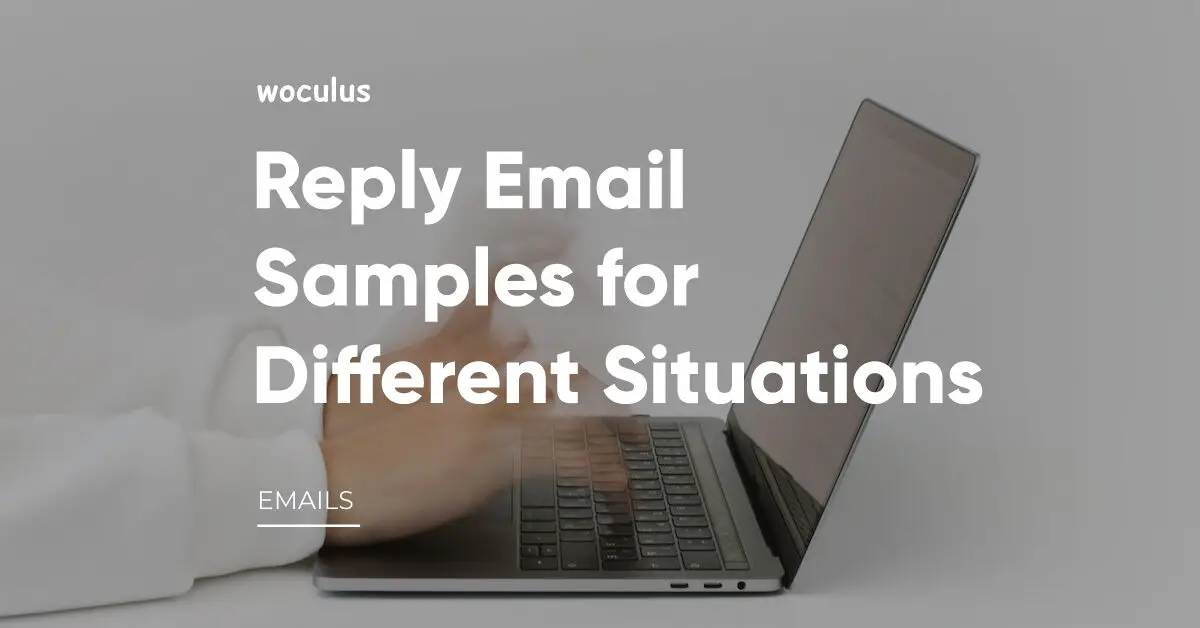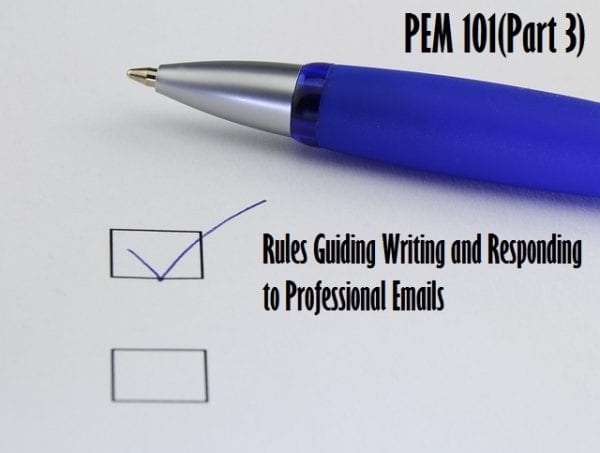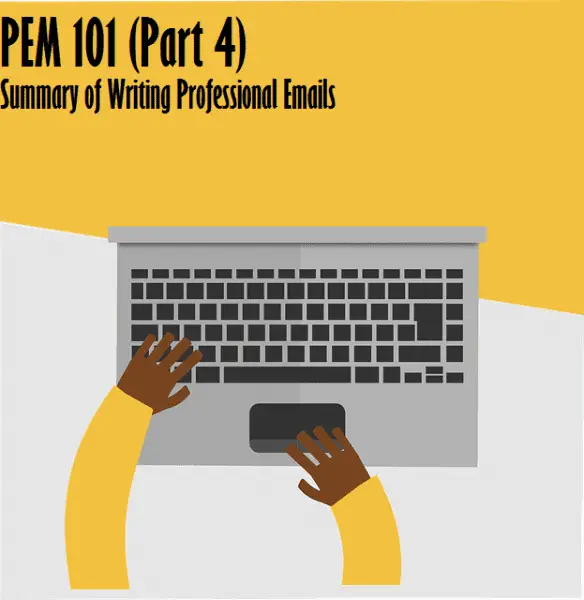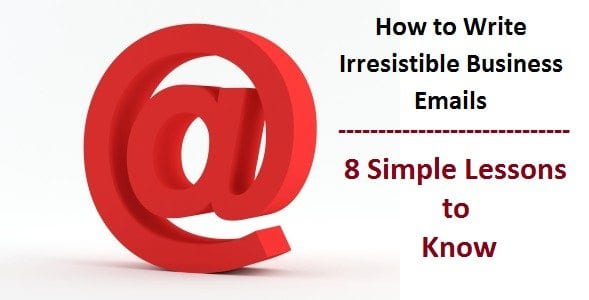Looking for a response to a particular situation, see other professional email responses here.
How do hope to satisfy your clients as a business owner without having to write succinct and clear replies to their emails? Or how would a salesperson or marketing personnel elaborate properly on the value of his product or service if he cannot effectively reply the email inquiries of potential clients?
I have covered the basics of emails replies in the article on Examples of Responding to Emails Professionally, and I was able to provide a couple of samples.
Tips for Writing Good and Effective Email Replies
In this post, I shall provide more samples on how to reply emails effectively and elaborate on some other tips for writing good and effective email replies. So, you should pay attention to the following tips:
1. Be clear and direct in your response email, and avoid being ambiguous.
That means you should know what you want to say, and say it with the shortest possible words.
Here are some clear, direct, and unambiguous professional email response examples:
Reply Email Sample I: Approving an Application
Dear Mr. Siva, Welcome! Your application to Woculus has been approved. We are proud to have you as one of our editors. Siva, as I said before, our vision at Woculus is to be the one-stop site where business owners, marketers and sales personnel can learn how to use technology profitably for their businesses. Our posts are well-research, practical and rich. As an upcoming blog, we constantly strive to provide the highest quality posts to our readers. If there is a better post about any of our areas of interest on the Internet, we are not doing our job well. Find your login details below: Username: Don Siva Password: siVA2013 The entire Woculus team looks forward to a very professional working relationship with you, and we ready to support you in any way possible to serve our audience better. Yours very truly,
2. Make your replies one-to-one.
That means you should take responsibility for your email replies and speak directly to the reader.
For example, instead of writing,
It will be appreciated if you are able to send the proposal before the weekend
You should write,
I would really appreciate it if you were able to send the proposal to me before the weekend.
From every email, you should be able to deduce some useful tips for deciding the best way to frame your reply. For example, you should know:
- What will make the reader of your email respond favorably
- What is of interest to him or her
- What is his or her perspective on the issue at hand
How To Respond to an Email Asking For Information: Examples Included
Here are two reply email samples, written one-to-one:
Reply Email Sample II: Declining an Application without Offending
Mr. Vijay, Thank you for your recent application to become a writer on Woculus. We are very much complimented that you would like to write for Woculus. Your application details will be retained in our files. Currently, we do not have any vacant section; and our writers are on the top of their jobs. We shall, however, contact you as soon as we have an opening. I would appreciate being notified if you wish to cancel your application for any reason. Best regards,
Reply Email Sample III: Approving Application for a Different Position
Dear Mr. Frank, Thank you for applying for the opening in our company and sending your design samples. I have reviewed your style and thought about the issues you raised during our last discussion, especially your reluctance to create new design samples for our evaluation. Since then, I have received new design samples from more than ten candidates, lending credence to their works. Eventually, I have concluded that your samples are not enough to help me reach a conclusion about you. So, we now have a new Chief Designer for our company. However, I would be happy to work with you on a contract basis if you agree to this. Thanks again, Frank, for your interest in our company. Cordially,
3. Keep it Short, Simple, and Sweet (KISSS).
Be careful of the length of your email replies; they determine if they will be read or not. This is an old principle of writing that still holds true in writing email replies.
Here’s a short email reply example:
Reply Email Sample IV: Declining an Invitation
Dear Miss Sheryl, Pardon the delay in responding to your last email. I have been in the process of setting up my own social network; so I had to resign from Facebook Inc. I very much appreciate your invitation to help evaluate the Facebook App you are developing this time, but this may not be in the best interest of Facebook's management. You may contact some other editors on Facebook forum. Thank you for understanding. Best regards,
Reply Email Sample V: Declining an Appointment
Dear Mr. Mohammed, I was flattered by your request to make me a minister in your church branch in Bahamas. Regrettably, I won't be able to accept this position. I wish you well in Bahamas Yours truly,
More Reply Emails on How to Respond to An Email Professionally
You will find more reply email samples below. For tips on writing and responding to business emails, you may refer to my post on 9 Tips You Need to Write and Respond to Emails Professionally.
Reply Email Sample VI: Reply to request for information about your product or service
Dear Mrs. Thatcher, Thank you for your inquiry about Apple Stores. Find attached herewith some literature on our products including the products in alpha development stage. I have also included a sample username and password for you to try out the products that catch your fancy. Please, do not hesitate to call me if you have further questions. I will be glad to have you as a customer. Sincerely,
Reply Email Sample VII: Reply to Request for Samples
Dear Mr. Ahsan, I have attached five samples of my original designs to this email. The sixth attachment is a list of designs where I collaborated with other designers including the location (URL) of the designs on the Internet. Thank you for allowing me to send samples to you. I will be pleased to participate in the forthcoming competition and also introduce my services to your team. Kindly notify me should you need any other information. Regards,
With the above reply email samples, you should be able to effectively respond, whether positively or negatively, to emails that come your way.
As a recap, you should always ensure your email replies are:
- Clear, direct and unambiguous
- One-to-one (between you and the reader)
- Short, Simple and Sweet
Here are more examples of how to write response emails:
Email Samples for Rejecting a Business Proposal







very useful. Thanks
How to replied for professional email id
Very useful indeed,
Ravi
thank you.it is very useful for learners.im a learner of english so this is helpful for me..
thank you so much
Very useful samples ,I really enjoyed reading them and want to use them in my emailings , very interested to read more and more email samples .
Thank you
I am wandering and search about idea email answers specially in replying to our friends for good impression .i found your article is best for this purpose i myself pick up the phrases in your articles its really worked . thanks .
that was very helpful and informative but what about auto replies?
Hi RaviGupta,
You read about writing autoreplies in the articles below:
– https://woculus.com/write-automatic-email-response-message/
– https://woculus.com/automatic-reply-emails-examples/
Let us know if they help. Thanks.
I really find this article useful as to my daily tasks since I’ve been asked to reply to business emails. I would definitely apply some ideas mentioned in the post! Thanks for sharing!
I am new comer to this;your samples are good &practicable
Thanks
Thanks, it’s helpful and informative.
Thanks,it’s helpful and informative.
Thanks you so much for sharing this important information
That was very helpful and informative
We used the best type of technology and which provide the best type of information. And In this post, you provide good information.
I want to know the format to reply for my training enquiries. Please help.
Many students will send the mail asking for different courses and i need a common template to reply all the queries.
I really find this articles very very useful, thanks for your guidance about emailing reply
I really find this articles very very useful, thanks for your guidance about emailing reply. wait for more information about.
Hi, thanks for sharing with us this knowledge base article post. Can you give me some tips about responding to email marketer samples?
thanks for sharing this info you provide a meaningful info throught this article.